This article is the second in a four-part series, exclusively for the Armenian Weekly, on the making of Encounters and Convergences: A Book of Ideas and Art by Seta B. Dadoyan.
PART TWO. Chapter III. Wartime art and aesthetic
In the spring of 1981, in addition to the ongoing fighting between militant factions, a large Israeli offensive on the southern, central and other parts of Lebanon, the Palestinian camps and the southern suburbs of the capital crippled life. In 1982, there was a massive invasion by land, air and sea. For months, artillery, warplanes and battleships bombarded the land. After the withdrawal of Israel, battles involving the local warring factions and the Syrian army, which had entered Lebanon in 1976, intensified.
By the end of 1983, in the eighth year of the war, after the withdrawal of Israel and the departure of Yasser Arafat from Tripoli with the al-Fatah organization, street and factional fighting and shelling continued with greater violence. Most of Beirut, especially the western part where we lived, was partly destroyed. But life went on everywhere despite barricades, rubbish-mountains, sandbag-hills, destroyed buildings, shattered glass, burned cars, all sorts of partisan and militia and party flags, logos, posters of warlords, political graffiti and religious and iconic figures. When shelling intensified, we sought shelters and sometimes spent days in dark corners and under stairs. With forced intermissions, schools, universities, banks and shops remained open, lectures and conferences were organized, friends visited, and we even had dinner parties, birthdays, weddings and surely many funerals.
Very recently, when I decided to organize my artwork, I noticed that in the eight years from the early 1980s to late 1987, I made over 40 drawings, seven of which are portraits, while the rest are simply “wartime-drawings.”
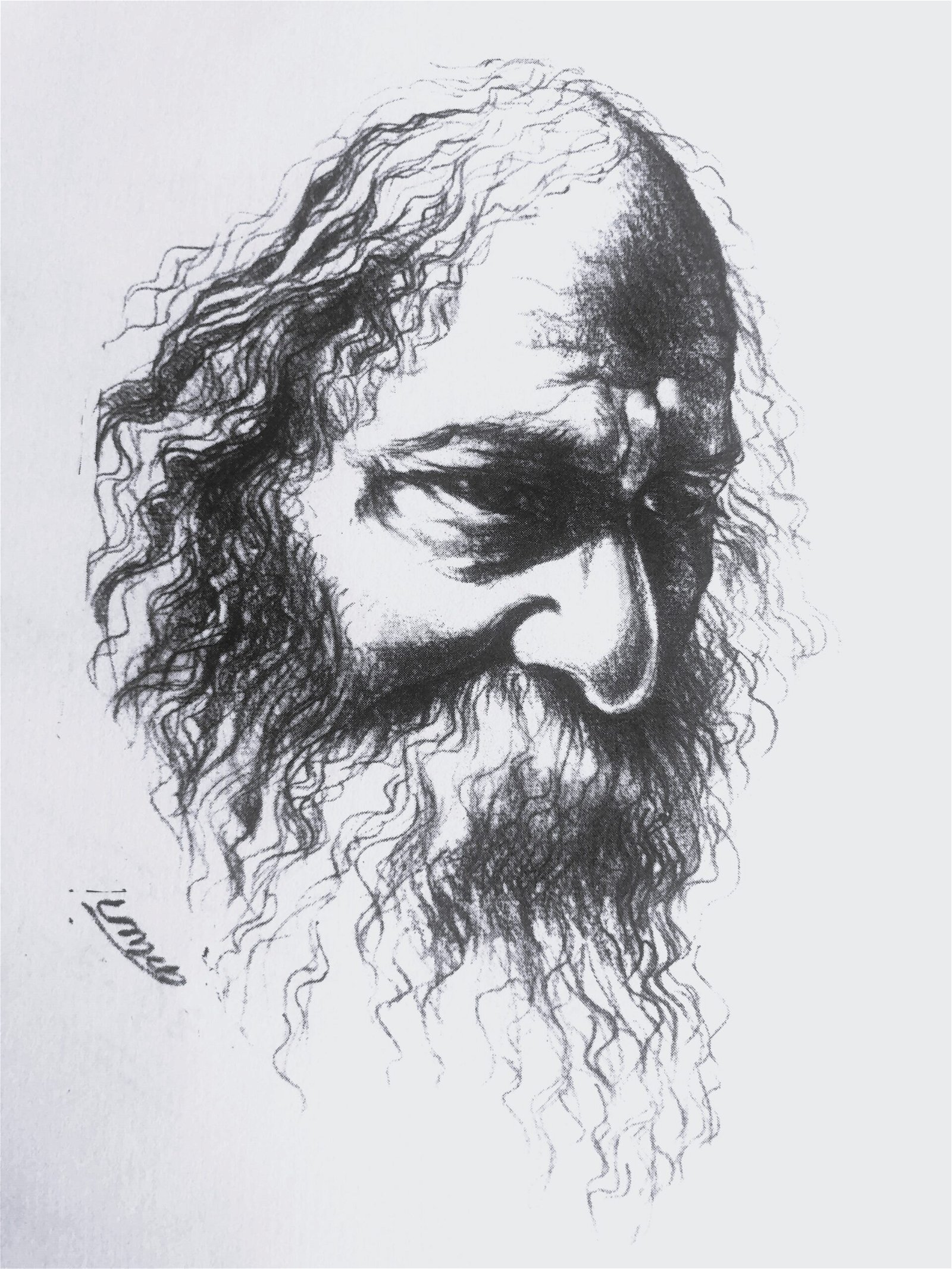
Just as life was wartime-life, art in turn could only be wartime-art. It traced a trajectory that took its beginning in the immediate realities of the war, and by the force of its convergence in the present moment, gave the work its truth-content and aesthetic legitimacy. Under the circumstances, I could not understand salon, studio and decorative artworks, nor the assumed “freedom” of art. I often wrote in the papers but was not lauded for my critique. The human condition in wartime and massive suffering were central to my thinking, and inevitably, the human figure became dominant in my work. For right or wrong reasons, wars were fought by people and affected all people in every possible respect. While somehow life went on, many suffered, many died, many survived, yet everywhere all waited for deliverance, and the vigil continued.
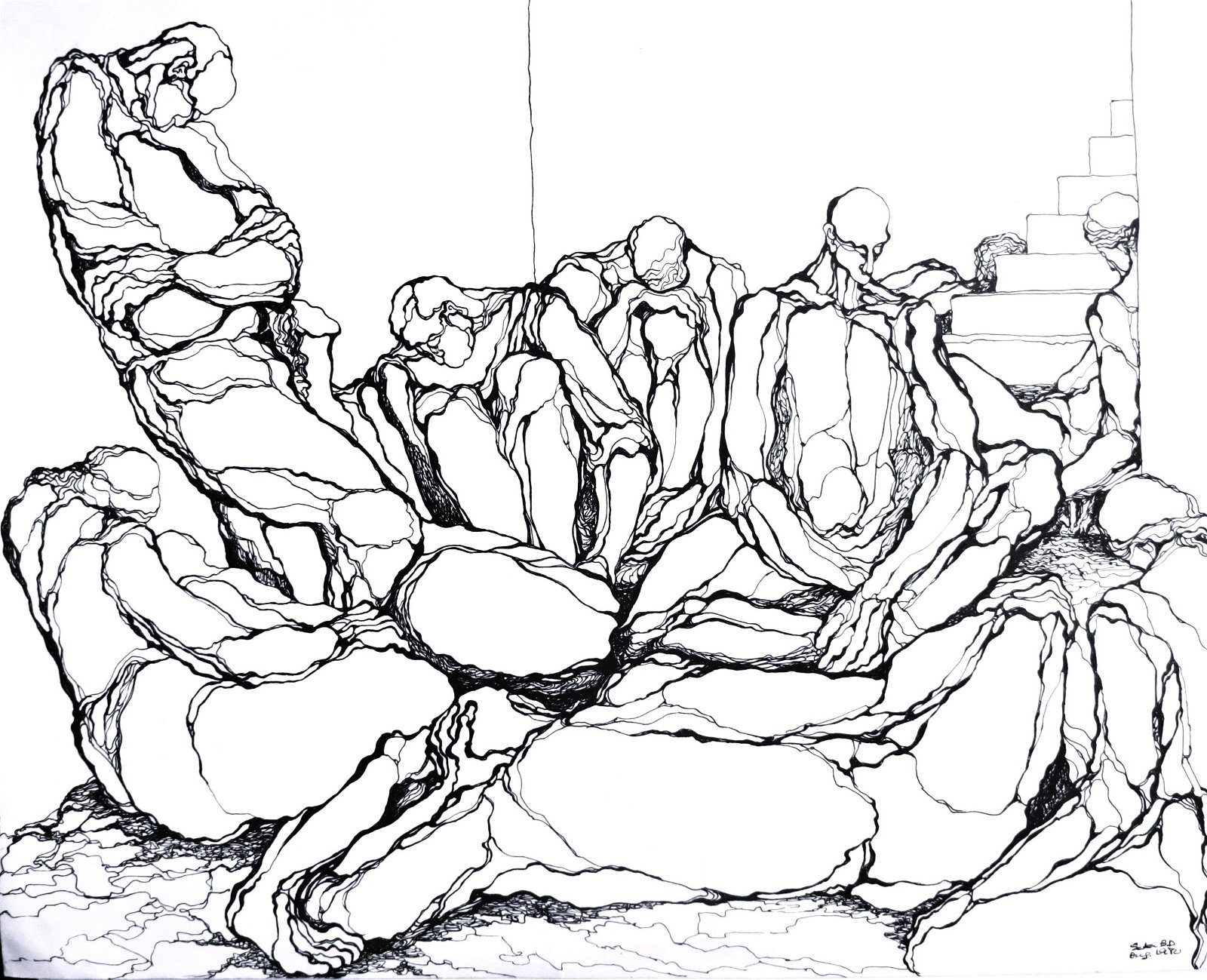
Next to one’s home, the “shelter”, al-malja (refuge, a more expressive word in Arabic) was symbolic of an absurd yet heroic wait [“The wait”]. The shelters, mostly makeshift places, were dark microcosms where people came together in terror, often with genuine sympathy and hope. Some died even in shelters. The existential weight of the term would only allow sharp black lines in ink [“The shelter”]. Death was a central fact of wartime life. Of all those who fought and died, some were true idealists and heroes with dreams of a just society. They were the comrades of the sufferers [“The comrade”].
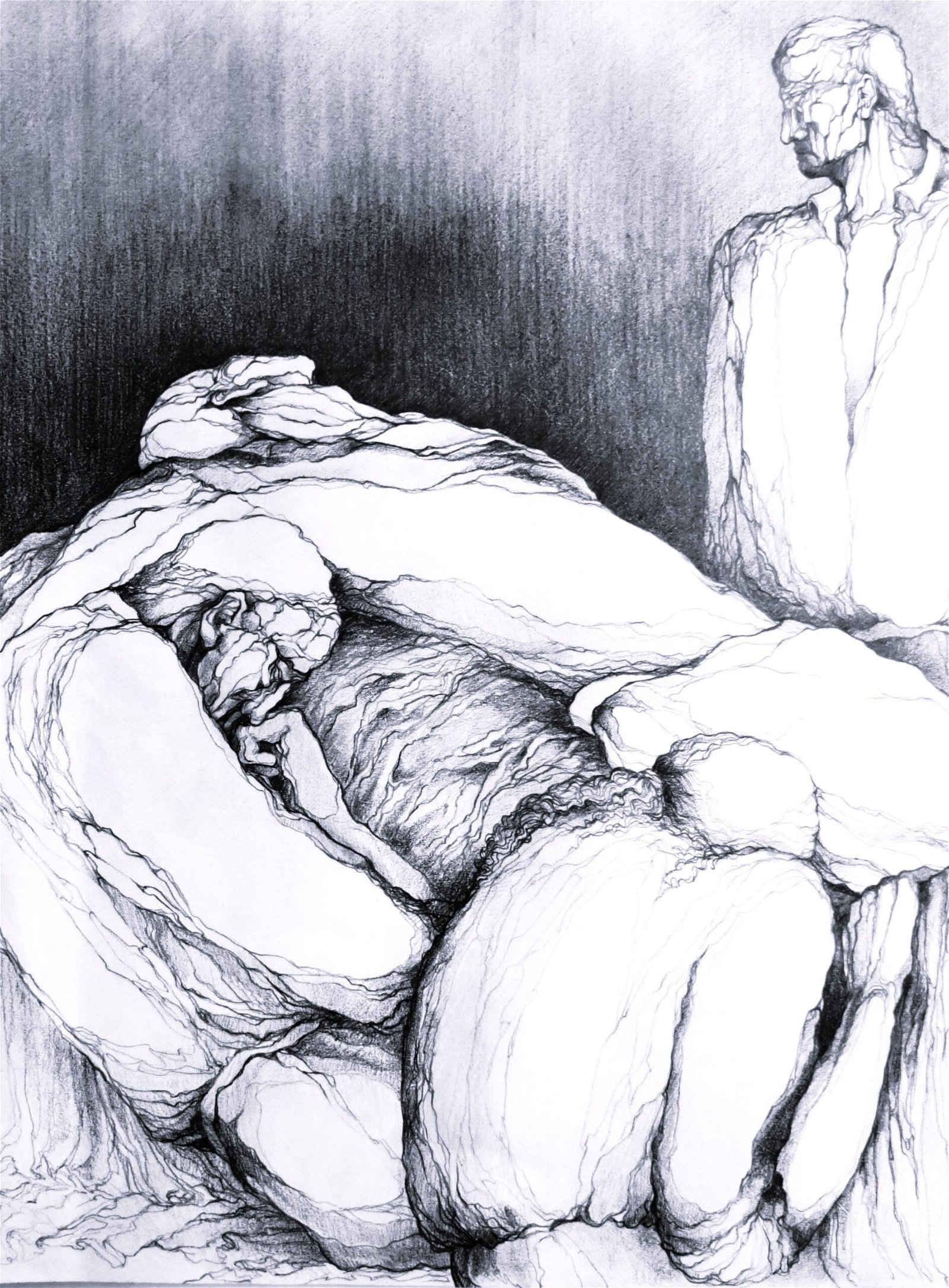
At times of “relative calm”, or hudū’ nisbī, as they were sarcastically referred to, life would return with force. We even took the children to places like Italy and Greece. As I look back, I am surprised at the number and frequency of social activities. The windows of the living room were covered with metal shields for security. We had frequent visitors who climbed a hundred stairs to the fifth floor with a dripping candle or a flickering flashlight. We sat for hours discussing everything, joking about the most serious issues, eating and drinking. When the shelling intensified or a gun battle raged on the street, our friends would simply stay longer. Six sketches sum up these times: “Worlds of silence,” “The cleaning lady,” “Portrait of S.,” “Gothic,” “The friend” and “The visit”. Frequent and often sudden shelling (qaṣf) was another wartime reality. It could happen anytime and cause massive panic. Amid loud car horns and ambulance sirens, people ran in all directions looking for shelter. I made a sketch about these terrifying episodes of “blind shelling” or qașf ‘ashwā’ī, as they were called.

Following the first and partial Israeli invasion in 1981, thousands of Palestinians moved from the camps in south Lebanon and the southern suburbs into the central-western parts of Beirut. They occupied schools, vacant or partly completed houses, apartments and entire buildings. At the time, the construction of our building on al-Farābī street, al-Zarif, was barely completed, and most of the apartments were vacant. About 300 Palestinians moved in, with their weapons and ammunition, even small-size artillery. For the next few years, we lived in surreal conditions with no electricity and running water in an extremely crowded and noisy building with 10 flights and no working elevator. During bombardments, dozens of terrified people would run into the lower floors, or to a partially completed building on the opposite side of the street, or simply crowd the stairs. They would stay for long periods, occasionally coming out for fresh air. Two of the sketches from these times are featured in the book.
By 1983, events took unexpected turns. After a wave of assassinations of prominent activists and the disappearance of the intellectual elite, it was clear that ideology was at an impasse and that regional regimes were involved in a power game, which continues, getting even more complicated and corrupt. There were few bright spots in the arts and literature, but there was no margin for ideology. Three sketches reflect these times: “Departure,” “Dialectics” and “Ideology in crisis.”

In wartime Beirut, the room, the house and the place where one felt safe took on a special significance and a role of sorts. During prolonged periods of shelling and life in a confined space, I did not even think of doing any figure drawing. While sitting with the family, doing housework, reading or writing at my desk with a manual typewriter, the “view” was the row of yellow buildings typical of old Beirut on the other side of the block. Except for one apartment, they were deserted and looked haunted with some laundry still hanging on the balconies. I drew the building, where an elderly lady, who seemed to be forgotten in the apartment, constantly moved between the balcony and the rooms [“Window 1”]. I made three more “views” of the other old buildings, all demolished. One building, now gone too, on the right corner in “Window 2,” was over two centuries old. It had been one of the most luxurious residences of Beirut in the early 19th century under the Ottomans. When the view from the window was exhausted, I turned to the houseplants, but not to the human figure, yet. There had been too many losses, catastrophes and deaths within a short period. During the three years, from 1983 to 1985, I made only seven sketches, four “windows” and three “rooms.” These were my “landscapes.”
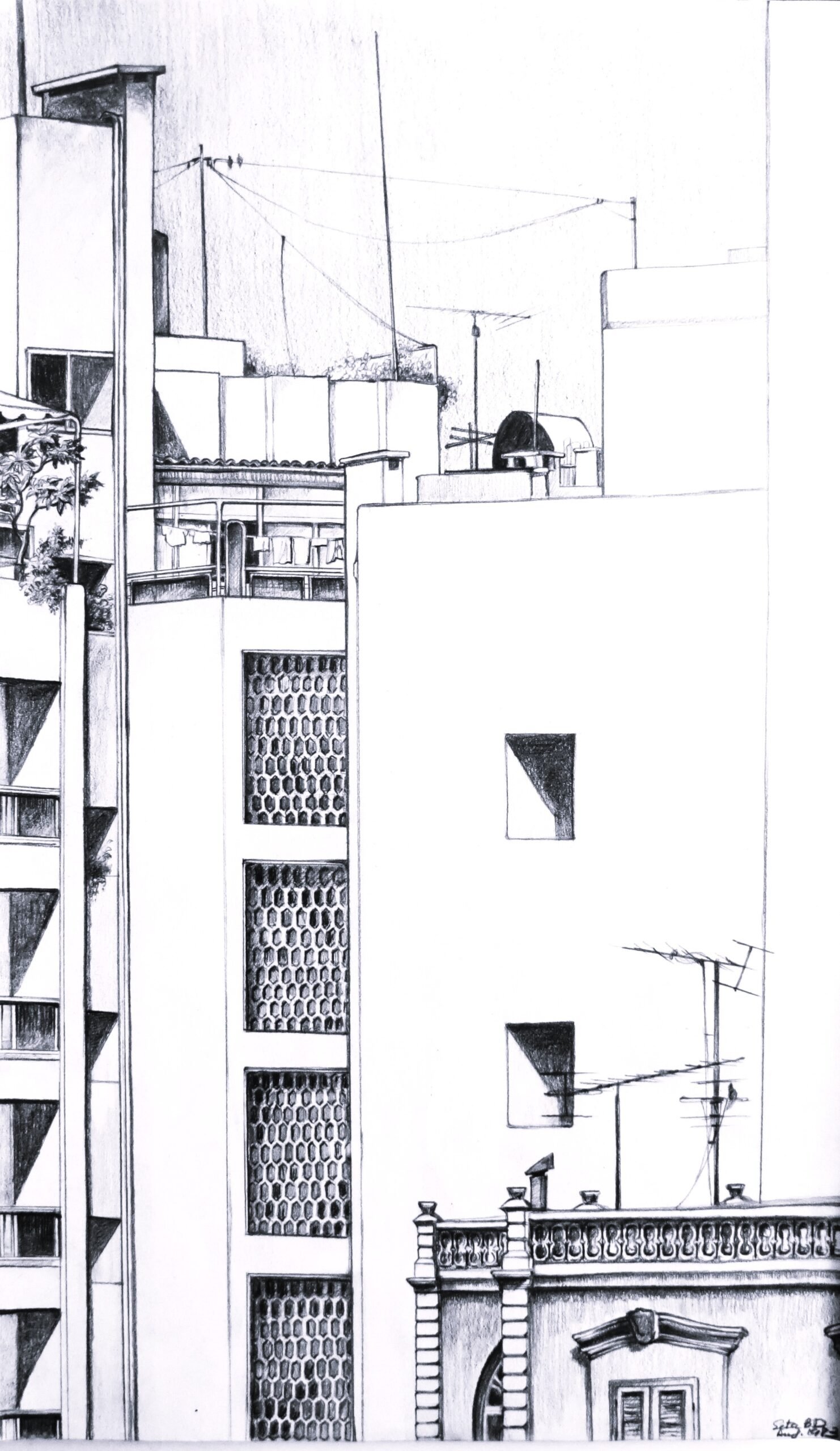
PART TWO. Chapter III. Thoughts and exits in chaos
In 1985, even though there was no improvement in the circumstances and the prospects for any solution were bleak, I seemed to have come to terms with my situatedness and made an enigmatic sketch [“Situatedness”]. The central figure on the foreground looks like a medieval monk. He stands too close to the viewer, and his head and feet are outside the frame. In his right hand he holds large old keys on a metal ring. The room is a messy art studio, a backstage room with drapes hanging from a higher level. There are empty boards and canvases against the wall, some ropes and a ladder with uneven sides leaning against the higher level from where the drapes hang. The door with a stain-ring around an old-fashioned nob is part open. With his back to the door, the monk-figure may have just walked in or expects others in the room. Soon, I made another enigmatic yet simpler sketch, “The stride.”
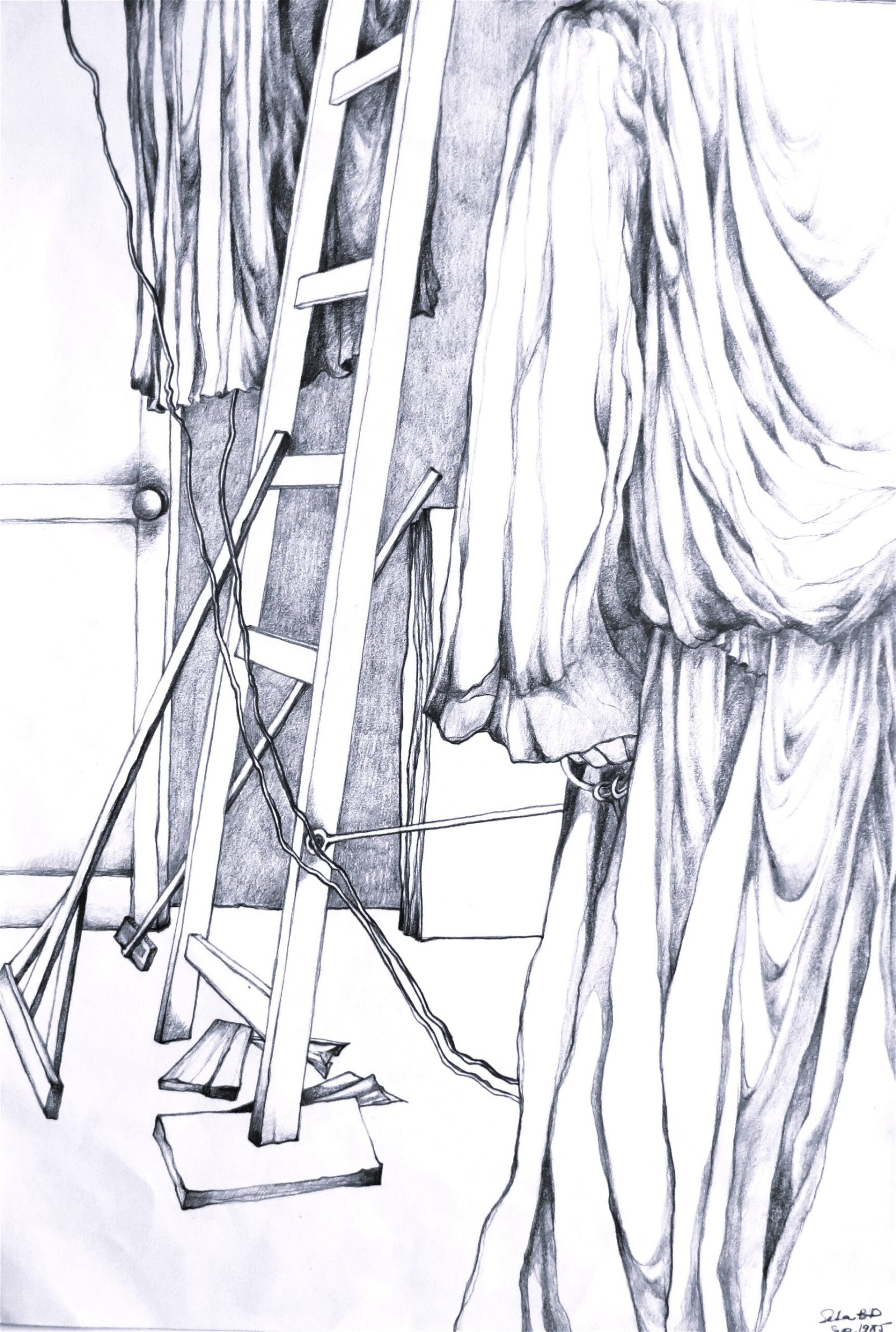
Meditation was a healing exercise in wartime, and I made a self-portrait of sorts [“The pause”]. In 2015, 30 years later, I made a variation on this drawing in color, for the cover of my book, The Armenian Condition in Hindsight and Foresight. During the war, the street where one lived was a microcosm where things happened and concerned the people who lived there. I made three sketches of al-Farābī, where we moved in 1981. It was previously known as the “Armenian quarter,” ḥayy al-arman, but almost everyone had migrated. After all night shelling, the streets were eerie scenes of debris and broken glass. We walked or drove through the rubble to school with the children, went to work, did the shopping, met with neighbors on the street and hoped the night would be calmer than the previous one. Four sketches are about this strange routine.
The human condition in wartime and massive suffering were central to my thinking, and inevitably, the human figure became dominant in my work. For right or wrong reasons, wars were fought by people and affected all people in every possible respect. While somehow life went on, many suffered, many died, many survived, yet everywhere all waited for deliverance, and the vigil continued.
Between 1981 and 1986, I was doing research at the Armenian library of Haigazian College/University while teaching part-time philosophy of religion and some Armenian studies courses. Despite, and perhaps because of, extremely difficult conditions on every level of daily life, and like many, I found my salvation in hard work. In 1986 I was invited to teach at the Civilization Sequence Program of the American University of Beirut (AUB). Wartime AUB was a peculiar place. There were normally unacceptable but now “legitimate” practices and norms in the way the students, faculty, administration, staff and people from warring parties carried out their duties and interacted. The walls, the classroom boards, the halls, the corridors and the entire beautiful campus on the Mediterranean became billboards for political slogans, comments, threats and caricatures. Professors and staff could be supported or threatened at gunpoint by students, colleagues or other staff, depending on who heard them or was watching. But again, somehow, life on campus too went on, and exams and quizzes were generally held on time, despite threats from students for high marks. Top administrators were assassinated on premises, the historic Assembly Hall was shelled, and the famous clock tower of AUB was bombed and collapsed in 1991. As far as I was concerned, teaching was a salvation, and I absolutely loved teaching cultural studies and art and had very high student evaluations. But I also suffered inner intrigues and a culture of rivalry and slander.
My two decades of teaching at AUB yielded two drawings, a group portrait of six of my colleagues “Colleagues” and “The banyan tree of AUB – A portrait.” The whole experience, from 1986 to 2005, teaching at the Civilization Sequence Program and the Faculty of Engineering and Architecture (philosophy of technology and art history) was unique and rewarding, despite the mentality of some faculty and AUB wartime diplomacy.
From 1987 to 1991, I worked for the complicated and exclusive degree of Doctor of Sciences in Philosophy, a degree higher than the Ph.D., granted in the German and Russian systems. I traveled to Yerevan for sources; these were otherwise “exits.” For four years, the courses, yearly exams, papers, sources and manuscripts from the Matenadaran and the final work kept me occupied. At the time, Beirut International Airport was closed, and all air travel was via the sea or other capitals. I flew to Yerevan from Damascus and Aleppo airports, sometimes traveling under bullets and shelling on the roads. I made four sketches at the start of my four-year work toward my degree: “Armenia rock island,” “The exit,” “The flight” and “The moment.” The defense of my dissertation was on September 20, 1991, a day before the declaration of the independence of the Third Republic. This was also the year the war ended in Lebanon. The degree, the promotion and total dedication to teaching and scholarship put my life on a different path for the next decades. Except for the 10 portraits made between 1985 and 2005, for the next 35 years from the fall of 1987, all art was put aside.
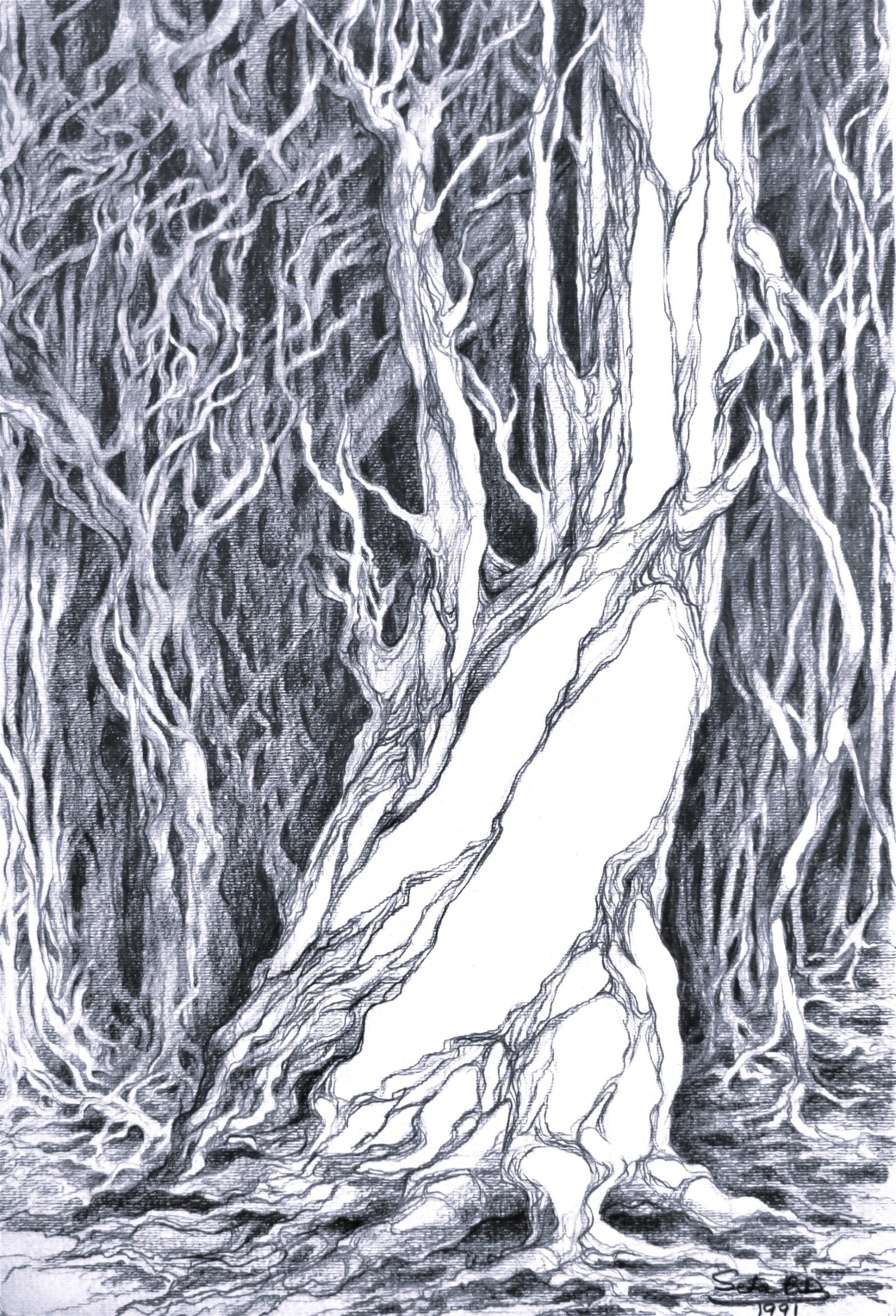
The extraordinary case of Armenian Cilicia was always a challenge for me. My father’s family, and over half the refugees in the Arab world, are originally Cilicians. From its rise in 1080 to the demise of the Kingdom in 1375, through the next five centuries to its complete devastation and evacuation by Turkey by the early 1920s, Armenian Cilicia between the Christian and Muslim worlds has been a poorly understood phenomenon. A deeper knowledge of the Armenian experience in the Islamic world is a prerequisite. Other cases too, such as the Fāțimid Armenians in 11th and 12th centuries, the Armenians in Bilād al-Shām (Greater Syria) and many others await thorough research. On the 1700th anniversary of the adoption of Christianity by the Armenian state, I was asked by Catholicos Aram I to prepare two studies about the history and the intellectual culture of Cilicia. This was an opportunity and opened new horizons. I dedicated several studies to various aspects of the history and intellectual culture of Cilicia, its artistic legacy and the institution of the Catholicosate. Later, I also edited and co-authored two volumes and several studies on Cilicia and related subjects.
My dissertation on the Islamic sources of Erznkats‘i, published in 1991, for the Doctor of Sciences in Philosophy opened a novel discipline of Islamic-Armenian interactive history in regional context. Identifying the patterns of interaction and defining the historicity of 14 centuries of the Armenian historical experience in worlds of Islam became career defining interests. I found myself on the path of hard-core scholarship. Hopefully, my six books in this discipline are a beginning. A truly contemporary and critical discipline of Islamic-Armenian studies is yet to break its way through the Herculean pillars between the Mediterranean and the Atlantic, of mainstream Armenian studies, into the open ocean of Near Eastern and interfaith studies. My work so far is a statement by the force of the material it makes available and the theses it expounds.


I know and admire Dr. Dadoyan as an academic, but I did not realize her profound gifts as an artist. “The Shelter” above is especially impressive and affecting. God bless Seta in all her endeavors.
Great drawings & compositions. It’s a sad statement on the Lebanon that I visited in the 1950’s & 1960’s
The Shelter, Beirut 1980 – Amazing!